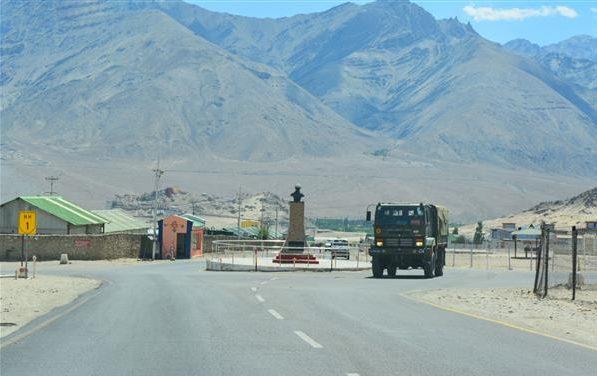In a significant development, the Taliban have announced their plans to formally join China’s Belt and Road Initiative (BRI) by Chinese President Xi Jinping’s. The Taliban administration announced that they would send a technical team to China for talks.
Afghan interim Commerce Minister Haji Nooruddin Azizi said, We requested China to allow us to be a part of the China-Pakistan Economic Corridor and Belt and Road Initiative.”
Azizi said the administration would also send a technical team to China to enable it to “better understand” the issues standing in the way of it joining the initiative, but did not elaborate on what was holding Afghanistan back.
The BRI, also known as the “New Silk Road,” is China’s ambitious global infrastructure project aimed at connecting countries through a network of roads, railways, ports, and other vital infrastructure. This unexpected move raises numerous questions and has sparked both curiosity and concerns on the international stage.
Taliban’s Decision to Join the BRI
Pakistan and China have agreed to invite third parties to participate in China’s Belt and Road Initiative (BRI), a multibillion dollar rail project. Pakistan Ambassador to China Moinul Haque highlighted China’s global leadership in technologies such as artificial intelligence, e-commerce, and green technologies as a key area for cooperation. New corridors like the China-Pakistan Digital Corridor, Green Corridor, and Health Corridor have been launched to benefit from emerging opportunities in science, technology, and IT.
The announcement from the Taliban about their intentions to join the Belt and Road Initiative is not only surprising but also significant for several reasons.
Afghanistan faces severe economic challenges and has a pressing need for financial aid to rebuild its war-torn infrastructure. Joining the BRI could open up access to funding and investment from China, which may help stabilize and develop the country’s economy.
By joining the BRI, the Taliban could potentially improve Afghanistan’s regional connectivity, allowing for the movement of goods and people, thus bolstering trade with neighboring countries.
This move by the Taliban signifies a geopolitical shift in the region. It could potentially draw Afghanistan closer to China and away from the influence of Western nations, particularly the United States.
Taliban’s entry to BRI; A Tricky gambit
The Taliban’s announcement of their intent to formally join China’s Belt and Road Initiative marks a significant turn of events in the geopolitical landscape. It has the potential to reshape the dynamics in the region and open up new opportunities for Afghanistan, as well as raise questions about China’s expanding global influence. As this development unfolds, it is clear that the world will be closely watching to see how this partnership between the Taliban and the BRI will impact Afghanistan’s future and the broader international community.
Though infrastructure development can play a key role in its stability, one has to rethink potential vulnerabilities that arise in the implementation of these megaprojects.
The question of how peace and reconciliation can be achieved in the long term for Afghanistan has yet to be answered. Over a decade has passed since the US-led intervention, which has brought neither security nor political stability.
Afghanistan’s security situation varies greatly from region to region. Although security is a pre-requisite for developing a road network, Infrastructure development itself is very important to defeating insurgency. Government troops can move more conveniently, and it becomes difficult for insurgents to hide improvised explosive devices (IEDs) on an asphalt road.
For Pakistan, the fundamental concern about Afghanistan joining CPEC is a much needed security risk mitigation strategy, which is missing.
International Reactions and Concerns
The Taliban’s decision to join the Belt and Road Initiative has generated a mixed reaction from the international community. Some nations view it as a step toward stabilizing Afghanistan and integrating it into the global economy, while others have expressed concerns.
1- China’s Influence: China stands to benefit from this move by gaining a foothold in Afghanistan. Afghanistan’s entry into BRI could be strategically significant for China’s regional interests. China’s involvement in Afghanistan may also offer a unique opportunity to expand its presence in Central Asia.
2- U.S. and Western Concerns: The United States and its Western allies are wary of China’s increasing global influence. They have expressed concerns about the implications of this decision. They fear that the Taliban’s association with the BRI could lead to further regional instability.
3- Regional Impact: Neighboring countries like Pakistan, Iran, and India are closely monitoring these developments. They are assessing how the Taliban’s association with the BRI may affect their respective interests and security concerns.
China’s Interest
Beijing has sought to develop its ties with the Taliban-run government since it took over in 2021, even though no other foreign government has recognized the administration. Last month, China became the first country to appoint an ambassador to Kabul.
Afghanistan could offer China a wealth of coveted mineral resources. Several Chinese companies already operate there, including the Metallurgical Corp. of China Ltd. The company has held talks with the Taliban administration as well as the previous Western-backed government over plans for a potentially huge copper mine.
Afghanistan and 34 other countries agreed to work together on the digital economy and green development on the sidelines of the Belt and Road Forum.
China’s Belt and Road Initiative is a colossal infrastructure project designed to promote economic development, trade, and connectivity between countries across Asia, Europe, Africa, and beyond. The initiative encompasses a wide range of projects, including the construction of highways, railways, pipelines, ports, and telecommunications networks.
By fostering economic cooperation and development, China aims to bolster its global influence while facilitating economic growth in participating nations. Already, some estimates list the Belt and Road Initiative as one of the largest infrastructure and investment projects in history, covering more than 68 countries, including 65% of the world’s population and 40% of the global gross domestic product
While some countries, especially the United States, view the project critically because of possible Chinese influence, others point to the creation of a new global growth engine by connecting and moving Asia, Europe and Africa closer together.


